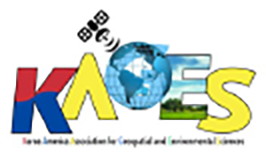Abstract
Haiti is the poorest country in the western hemisphere and is beset by catastrophic events of natural and anthropogenic origins. Therefore, Haiti is vulnerable to and ill-equipped to manage these events. Since 2004, the incidence and intensity of tropical storms over the island of Hispaniola has resulted in loss of life and been the catalyst for forced migration of the population, resulting in contamination of water and health issues, i.e. cholera. Our research uses GIS and Remote Sensing to address the potential flooding hazard to population and agriculture abutting the closed basin lake Étang Saumâtre. Our analysis of Landsat imagery from the past 30 years predicts the rate of future lake level rise and sites the lakeshore areas most at risk. This analysis indicates a 20.6% increase in lake area. Our analysis of the terrain demonstrates the vulnerability of areas to the east and the west of the lake, due to the lake’s east/west trending location in the Hispaniola Rift Valley. To the east is the border with the Dominican Republic and Lake Enriquillo; to the west is the low lying Cul de Sac plain. Areas of the Cul de Sac, which include Port au Prince, are densely populated. Large expanses of productive agricultural land are also located in the Cul de Sac. Satellite imagery and on ground research verify that homes, roads and agricultural fields have already been inundated.
Recommended Citation
Hotz, Helenmary M. and Christian, Alan D.
(2015)
"Using GIS and Remote Sensing to Analyze Lake Level Rise of Étang Saumâtre, Haiti,"
International Journal of Geospatial and Environmental Research: Vol. 2:
No.
1, Article 6.
Available at:
https://dc.uwm.edu/ijger/vol2/iss1/6

